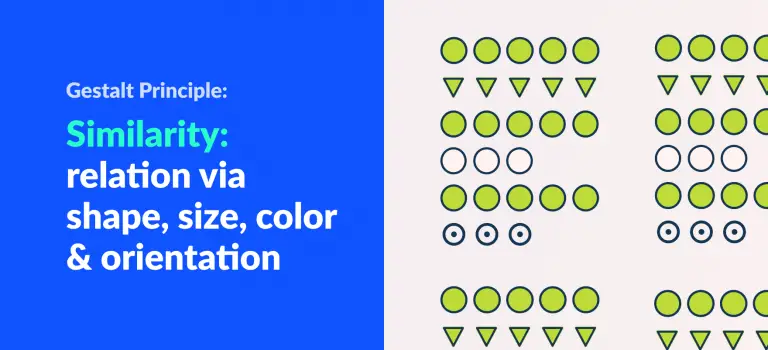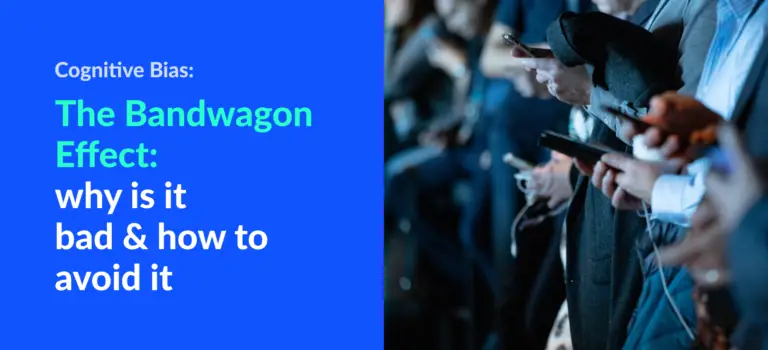Conformity Bias: How Marketers use Social Trends to their Advantage
We change our behavior according to what is socially accepted at the moment. In this article, we will go into detail about how marketers use this to their advantage.
What is Conformity Bias?
Conformity is a social phenomenon where we change our behavior to become part of a bigger group or a trend.
In simple words, conformity is when we change our behavior to be more like others.
For example, all your friends are excited about this new concert. Even though you really don’t like the bands, you might conform to go with them. This is because we don’t want to be left out of the group.
Why do we conform?
Let’s say we are visiting a foreign country. And let’s assume the cultural difference there is quite noticeable. We tend to conform to their social norms because it helps us guide how we ought to behave in their society. We follow the local’s lead on what to do and what not to do.
A common example might be leaving your shoes at the door before entering a house in Japan. This is how we make quick decisions when we are unsure in any situation.
Humans are social creatures and like to identify themselves with a certain group. Let’s take this slogan for an example:
“All the cool kids play Fortnite.”
People don’t want to be labeled as not being cool. So, they play Fortnite since all their peers are playing it.
People tend to conform to their peer’s activities, be it in their profession, hobbies, etc.
Now let’s assume we want to rebel against the norms. We are brave enough to enter a Japanese house with our shoes on. The consequences are pretty predictable with people keeping a distance away from us or much worse. However, not all people are rebels like us and they have a real fear of being too different from others. People don’t like being left out or isolated because they are considered different.
Summarizing all of the above into three points:
- We conform to make decisions when we are unsure of a situation.
- We conform to be associated with a certain group.
- We conform so that we are not perceived as being too different.
Examples of conformity and social influence in marketing
We will start with one of the biggest impacts of marketing on conformity and social influence. Everyone has heard the following statement:
“A Diamond is forever.”
No diamonds are not forever. They can discolor or be chipped and can also be shattered. But do we dare give an engagement ring without a diamond on it? The bigger the diamond the bigger your love for your spouse, or so people tend to think.
It wasn’t always like that though. Diamond prices were falling all around the world. In the 1940s, a simple campaign with celebrities, fashion designers and models wearing diamond accessories making it look like the symbol of love helped keep the sales and the price up for diamonds.
This is how big brands use celebrities to showcase their product. This creates a social norm on what is fashionable and what is outdated.
If a popular celebrity is seen wearing a watch of a certain brand then there is an appeal to be using the same brand. This is a very common type of marketing.
Modern Conformity Example: #challenges in Social Media
A modern form of conformity can be seen as hashtags challenges in social media such as Instagram and TikTok. Lil Nas X’s Old Town Road was part of a TikTok challenge called “Yee Haw Challenge” which escalated him to stardom. A simple online challenge that everyone was posting made his song viral. This was a very clever way of marketing. Some might even call it a stroke of genius.
While we also got a few awful challenges like the “tide pod challenge“ where kids were eating detergents, this also shows how powerful this form of marketing can be.
How Conformity can be implemented in our Marketing Campaigns?
A few weeks ago, I was working on marketing for the Programiz’s Learn Python mobile app. So, we had a case where we wanted to test conformity and the following copies were selected:
Copy 1: The new Python app everyone is talking about.
Copy 2: Over 2 million students rely on Programiz to start their Python careers.
The first copy focuses on the new trendy app everyone is using to learn Python. We didn’t want to focus heavily on how popular it was with their peers. So we settled on a subtle copy here.
For the second copy, we wanted to be more statistical and show more of a gain scenario to the viewers. This combines elements of both the framing effect in marketing and of conformity bias. The combination of figures and gain scenario really worked out well for us.
Here is how the final marketing assets looked:

If you want to see the results of these tests for Programiz, I would suggest you take a look at my article on How psychology is used in marketing.
Further Reading
If you are looking to research some more marketing psychologies I suggest you take a look at Framing Effect: Influencing Decision Making in Product Design & Marketing and Cognitive Dissonance in Marketing: Influencing viewers through discomfort.
If you are looking for a list of major cognitive biases used by marketers then I suggest you take a look at List of Cognitive Biases used by Marketers.




